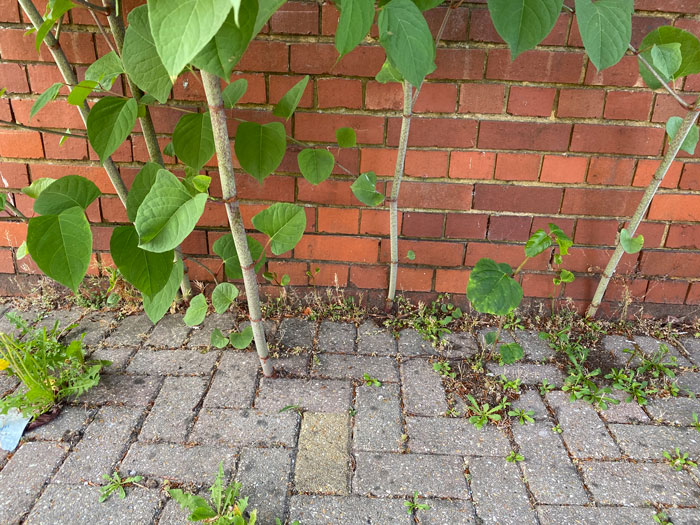
Japanese Knotweed (Fallopia japonica) is a highly invasive plant that can cause significant environmental and structural damage. Originating from East Asia, it has spread widely across various regions, posing challenges for property owners and environmental conservationists alike. This blog post aims to share effective strategies to prevent the spread of Japanese Knotweed in your community, ensuring a proactive approach to protect local ecosystems and property values.
Understanding Japanese Knotweed
Before diving into prevention strategies, it’s crucial to understand what makes Japanese Knotweed such a formidable opponent. This plant is known for its rapid growth rate, resilience, and ability to thrive in a wide range of soil types. It can grow up to 10 cm per day during the growing season, with roots (rhizomes) extending up to 7 meters horizontally and 3 meters deep, potentially damaging buildings, roads, and flood defenses.
Identification: The First Step to Prevention
Early identification is key to preventing the spread of Japanese Knotweed. Look for the following characteristics:
- Leaves: Heart or shovel-shaped, around 12-18 cm in length.
- Stems: Bamboo-like, green with purple specks, and hollow.
- Flowers: Small, creamy-white flowers that appear in late summer and early autumn.
- Growth pattern: Dense clumps that can quickly dominate an area.
Preventative Measures
1. Educate the Community
Awareness is the first line of defense. Educate your community about the identification of Japanese Knotweed and the importance of early detection. Workshops, leaflets, and social media are effective tools for raising awareness.
2. Regular Monitoring
Encourage community members to regularly monitor their property and communal areas for signs of Japanese Knotweed. Early detection can significantly reduce the complexity and cost of removal.
3. Proper Disposal
Never compost or dispose of Japanese Knotweed with regular garden waste. Its ability to regenerate from small fragments means it can easily spread to new areas. Follow local guidelines for disposing of invasive species safely.
4. Professional Removal
For established infestations, professional removal is often necessary. Techniques such as herbicide application, excavation, and root barrier installation can be effective but may require expert knowledge. This is where the keyword comes into play: consider getting a removal cost for Japanese Knotweed from knotweeduk.com as a specialized treatment option to eradicate this invasive species from your community.
5. Landscaping and Gardening Practices
Adopt gardening practices that discourage the establishment of Japanese Knotweed. Use native plants in your landscaping, as they are less likely to be overtaken by invasive species. Additionally, maintain healthy soil and garden hygiene to prevent the introduction and spread of invasive plants.
6. Community Coordination
Collaboration among neighbors and community members is crucial for effectively managing Japanese Knotweed. Coordinate efforts to monitor, report, and remove any sightings of the plant. A unified approach ensures comprehensive coverage and prevention.
7. Legislation and Compliance
Be aware of and comply with local legislation regarding the control and disposal of Japanese Knotweed. Some regions have specific laws that require property owners to control invasive species on their land.
Case Studies and Success Stories
Highlighting success stories within the community can serve as a powerful motivator. Share case studies where early identification and community-led initiatives have successfully controlled the spread of Japanese Knotweed. These stories can inspire others to take action and contribute to a collective effort against this invasive species.
Conclusion
Preventing the spread of Japanese Knotweed in your community requires a multifaceted approach, combining education, early detection, proper disposal, professional removal, and community coordination. By taking proactive steps and working together, we can protect our local environments and infrastructure from the damaging effects of this invasive plant. Remember, early action is critical, and the support of professional services like “surgery for Japanese Knotweed from knotweeduk.com” can be invaluable in eradicating established infestations. Let’s unite in our efforts to keep our communities safe and thriving, free from the threat of Japanese Knotweed.











